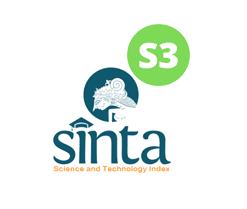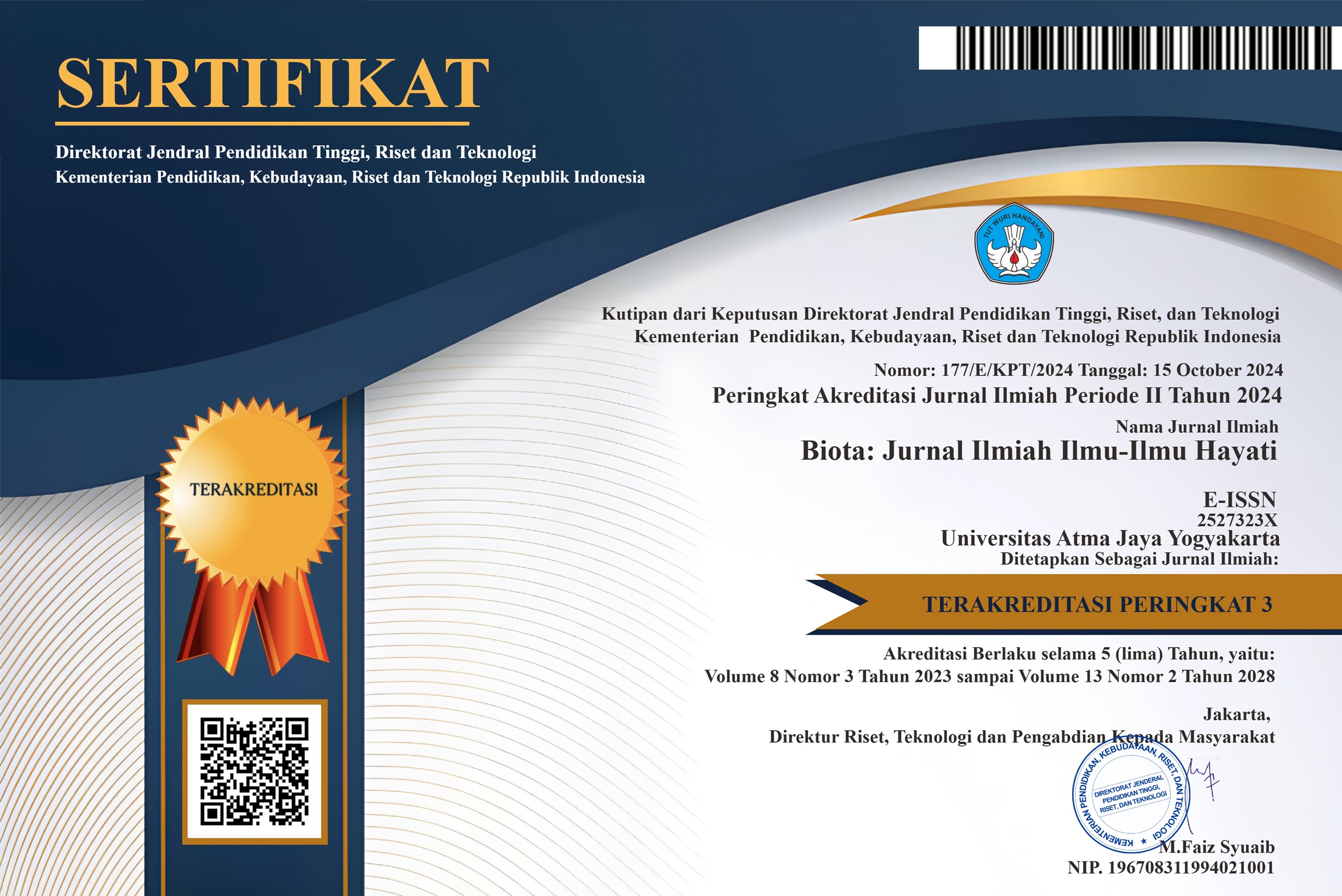Potensi Hiperakumulasi Saccharum spontaneum pada Medium Limbah Tailing Terkontaminasi Sianida
DOI:
https://doi.org/10.24002/biota.v13i2.2677Keywords:
hyperaccumulator, phytoextraction, cyanide, Saccharum spontaneumAbstract
One approach to minimize risks from some toxic pollutants is phytoextraction using hyperaccumulator plants. These remarkable plant species accumulate appreciable high concentration of pollutants, including cyanide than normal plants. Although cyanide is not categorized as heavy metal, its presence is considered as one of important toxic pollutants in the environment. Detoxification of cyanide contaminated soils and waters with plants seems to be a feasible option. Since plants vary in their ability to accumulate specific contaminants, it is necessary to select plant species that can both accumulate and tolerate the contaminants. This study aims to characterized plants that grow under extreme contaminated media of gold mined tailing belongs to PT ANTAM Cikotok and to analyse their potencies as hyperaccumulators. Saccharum spontaneum which was proven tolerant and dominant in the contaminated site as well as potential in producing high biomass was used in this research. The plants were grown in tailing waste media added by 0, 5 and 10 mg kg-1 CN. Organic fertilizers i.e. manure and compost were applied to increase CN uptake. The results showed that the plants were capable of growing under the highest level of CN. Application of organic fertilizer increased plant uptake. The results indicated that Saccharum spontaneum can be considered as high tolerance and potentially effective in accumulating CN in their roots and above ground portions.Downloads
Published
23-10-2019
How to Cite
Hidayati, N., Juhaeti, T., & Syarif, F. (2019). Potensi Hiperakumulasi Saccharum spontaneum pada Medium Limbah Tailing Terkontaminasi Sianida. Biota : Jurnal Ilmiah Ilmu-Ilmu Hayati, 13(2), 97–105. https://doi.org/10.24002/biota.v13i2.2677
Issue
Section
Articles
License
Authors who publish with Biota : Jurnal Ilmiah Ilmu-Ilmu Hayati agree to the following terms:
- Authors retain copyright and grant the Biota : Jurnal Ilmiah Ilmu-Ilmu Hayati right of first publication. Licensed under a Creative Commons Attribution-NonCommercial 4.0 International License that allows others to share the work with an acknowledgment of the work's authorship and initial publication in this journal.
- Authors are able to enter into separate, additional contractual arrangements for the non-exclusive distribution of the journal's published version of the work (e.g., post it to an institutional repository or publish it in a book), with an acknowledgment of its initial publication in Biota : Jurnal Ilmiah Ilmu-Ilmu Hayati, and as long as Author is not used for commercial purposes.












